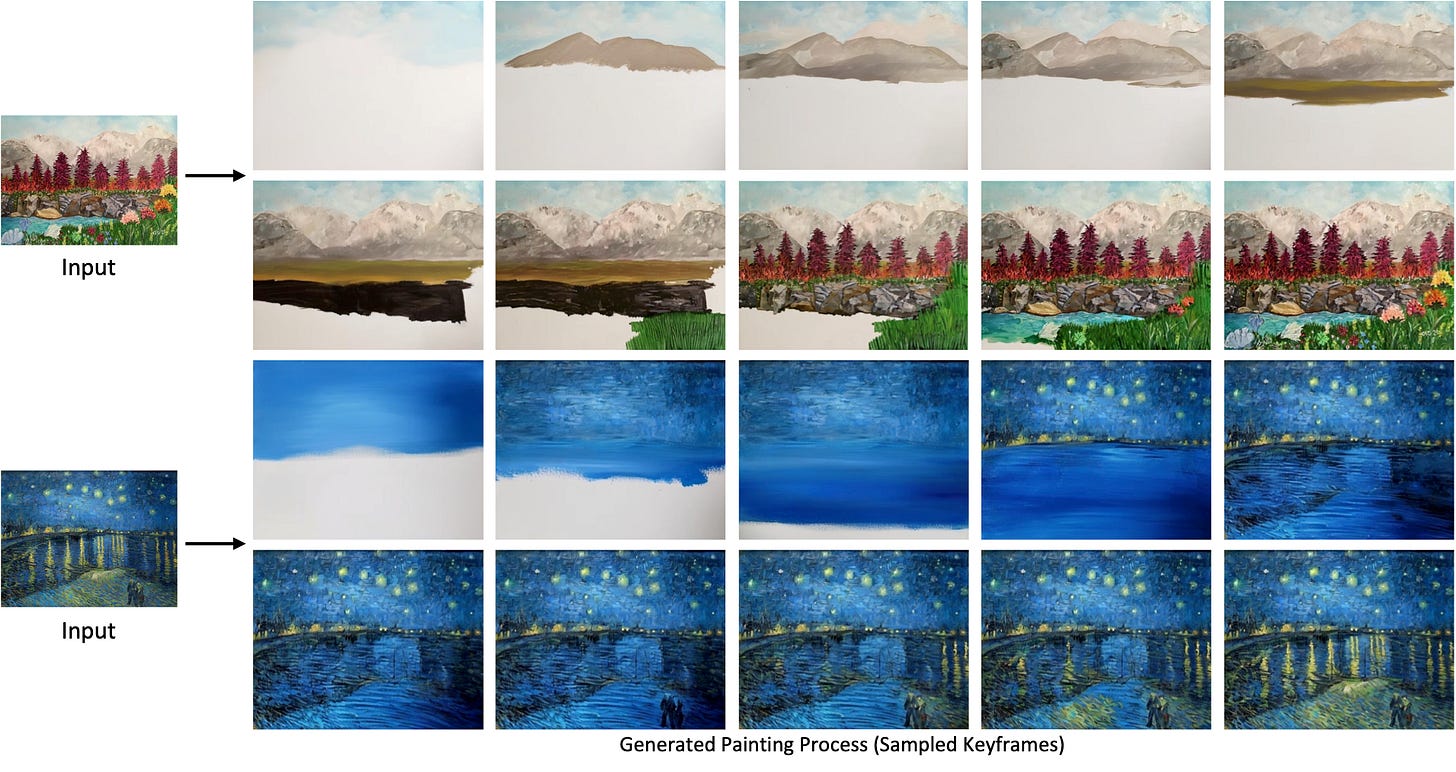⚡ Input is Output - Issue #5
Thursdays at the pub, McLaren W1, Wise Guys and Mountain Style.
Hello, hello,
Welcome back to another issue of Input is Output. I'll start with an apology. I know it has been a few weeks since the last edition. I did say (hopefully) weekly issues. I could offer you a list of pitiful excuses, such as changing jobs, working on a children’s book and writing a series for Little Black Book about SXSW, but where would that get you? Well, on the later, inspired, I suggest you read it, but not until you've read this first.
SXSW was excellent. I avoided attending AI sessions specifically and sought as much variety as possible. Topics included quantum computing, biotech, CRISPR and space exploration.
I must mention I'm still stuck in a vast AI rabbit hole; I'll discuss that later. That said, this week should be more of a mix of forward-thinking ideas, inspiration, and reflections on the intersection of technology and human experience.
Let me know what you think.
Enjoy.
This week’s Input is Output in summary:
⚡ 5 Things:
💭 Thought for the week: “Don’t expect AGI anytime soon”
⚡ Inverse Painting
"Inverse Painting: Reconstructing The Painting Process" is a method that generates time-lapse videos depicting how a painting might have been created. By analysing an input painting, the system iteratively updates a blank canvas, simulating the artist’s process. Trained on various painting videos, it incorporates text and region understanding to produce painting “instructions," which guide a diffusion-based renderer in updating the canvas. This approach extrapolates beyond its training data, producing plausible results across diverse artistic styles and genres.
This approach is fascinating from a creative perspective because it transforms static art into dynamic storytelling, offering new ways to engage with and interpret creativity. Reconstructing the artistic process showcases how art is made and democratises creative learning, enabling aspiring artists to reverse-engineer techniques from masterpieces.
This synthesis of AI and art opens up possibilities for interactive learning tools, art education, and even collaborative artistic endeavours, pushing the boundaries of what humans and machines can achieve creatively.
You can read the full research paper here.
⚡ Thursdays at the pub…
"We once talked about football and sex. These days it's more prostates and pensions."
The article from the BBC really caught my attention. For a mix of reasons. Let me explain. Six friends in Sheffield have met for a pint every Thursday for 56 years, sharing life's journey and adapting to changing times, from talking about football and sex to pension discussions.
Through pandemic Zoom calls, a recent reunion, and loyalty to their favourite pubs, their commitment highlights the value of long-lasting friendships that thrive on regular connection.
I'll be honest: I miss my friends and going to the pub. Post-pandemic, we underestimate the importance of consistency and shared experiences in maintaining relationships. Everyone is “busy” and reliant on social media to fill the gaps in what is happening in our friends lives. I’d much rather discuss it all down the pub. Anyone for a pint?
You can read the full article here.
⚡ McLaren W1
I've always been a petrolhead (or a rev head, as my father-in-law) likes to call me. I blame my dad; he was an engineer and loved anything mechanical. The tipping point was probably being asked by my dad if I wanted to drive him from Surrey to Devon in his brand new BMW 525i, at age 12! But that is a story for another time.
Anyway, I digress, the McLaren W1. What a car! Just look at it! It’s not your average 4 door family saloon is it?
Over a decade after the McLaren P1 entered the automotive world, McLaren has unveiled its newest hypercar, the W1. Like its successor, the P1, the W1 is a rear-wheel drive hybrid with a V-8 mounted in the middle. But that is where the similarities end. This is a far more advanced car in every way.
The McLaren W1 is a technological marvel. The W1 has taken a lot of the best technology and thinking available today, essentially thanks to it’s Formula One pedigree, to move the hypercar game forward. I won’t do the technology justice trying to explain it all, but I suggest you take a look over here.
For me, the W1 serves as a powerful metaphor for the kind of visionary craftsmanship we aspire to in tech and innovation. McLaren’s relentless attention to detail and high-performance engineering illustrates how we too need to bring an uncompromising level of precision to our work with tech-driven solutions. It’s a reminder that innovation isn’t just about speed; it’s about marrying purpose with unparalleled quality, creating products that not only perform but inspire.
⚡ Mountain Style
Mountain Style is a fascinating book about how UK climbers and innovators, often starting with no money and just a sewing machine in a back room, helped create the outdoor clothing industry we know today.
One of the authors, Henry Iddon, is a close friend and one I'm incredibly proud of for pulling this off.
The book celebrates the UK's outdoor brands' history, vintage style, and visual heritage. The amount of time and research Henry and his co-author Max Leonard put into this is incredible. The book is not only fascinating, it is also beautiful to look at.
The book is a brilliant metaphor for innovation. Looking back, we could learn how to navigate a path forward with the technical capabilities we now take for granted. Adventure is not about doing things quickly or efficiently. Otherwise, we'd take the ski lift instead of climbing the mountain on foot. By definition, there must always be some resistance and effort for adventure to exist. The same applies to innovation.
Mountain Style is available to buy here.
⚡ The future of reusability
On October 13th, 2024, SpaceX's Starship booster launched into space and landed on the same tower in under seven minutes!
This is a massive step towards a reusable vehicle that can explore all of the solar system and drastically reduce the cost of getting mass into orbit and beyond. The future of reusability in space exploration is here!
Given NASA's plan to return humans to the surface of the Moon as part of the Armetis programme, the Starship system is integral to NASA's plans for lunar exploration.
If we compare this to the invention of ships capable of traversing oceans and how humanity has advanced because of that, where we might go next is unfathomable.
Congratulations SpaceX!
You can watch Starship’s fifth flight test here.
💭 Thought for the week: “Don’t expect AGI anytime soon”
The topic of Artificial General Intelligence (AGI) has captivated the imaginations of technologists, futurists, and the public alike. While we've seen incredible progress in AI, with systems now capable of performing specific tasks at near-human levels, AGI - an intelligence that can understand, learn, and apply knowledge across any domain like a human remains elusive. The excitement around AI often leads to speculation that AGI is just around the corner, but this is far from certain. In fact, it's reasonable to argue that we shouldn't expect AGI anytime soon.
Why? Some thoughts…
The complexity of General Intelligence
Despite the impressive achievements of today's AI, these systems are fundamentally specialised, excelling only within the narrow confines of the tasks for which they've been trained. A chatbot like GPT-4 may be able to answer questions or generate text on a wide range of topics. Still, it does so without any deep understanding of the world. It cannot truly reason, possess self-awareness, or transfer knowledge between vastly different contexts, all core components of AGI.
AGI would require replicating human cognitive abilities and the flexibility and adaptability of our brains, which have evolved over millions of years. This is an immensely complex challenge that goes beyond improving current models or increasing computational power. Our understanding of human consciousness, reasoning, and emotion is still in its infancy, making it challenging to engineer these traits into machines.
As a side note, this is a post on Neuralink and the Brain does a brilliant job of explaining how little we actually know about the brain, the challenges of augmenting intelligence and brain-computer interfaces.
The limitations of current AI
Recent advancements in deep learning and neural networks have undoubtedly brought AI closer to performing complex tasks. However, these advancements have also revealed the inherent limitations of the current AI paradigm. Today's AI models require vast amounts of data, highly specialised training, and extensive fine-tuning to operate effectively in specific scenarios. Even then, they remain brittle and fail spectacularly when presented with tasks outside of their training.
For AGI to emerge, we would need breakthroughs in areas like unsupervised learning and generalisation and perhaps entirely new approaches to building cognitive architectures. Right now, AI systems can't generalise in the way humans do. For instance, a child can learn the concept of "cat" after seeing only a few examples. At the same time, AI often requires thousands or millions of examples to achieve a comparable result and still cannot transfer that learning to related tasks without retraining.
Scientific and ethical hurdles
There are also significant scientific unknowns that prevent AGI from becoming a reality in the near future. We don't yet understand how intelligence works at a fundamental level. Without knowing how the brain operates, replicating its functions in silicon remains a distant dream. Theories of consciousness, learning, and reasoning are still under development, and translating these abstract ideas into practical engineering solutions is far from straightforward.
Beyond the technical challenges, ethical and societal considerations could delay AGI even further. What should AGI's role be in society? How do we ensure it aligns with human values and doesn't exacerbate inequality or cause harm? The ethical and regulatory frameworks to guide AGI development are still in their infancy and could significantly break progress.
The misleading hype
Much of the hype around AGI stems from the rapid pace of AI development over the past decade. This has led to optimism and, in some cases, fear that AGI is just a few years away. However, the gap between specialised AI and AGI remains vast. While AI researchers continue to make incremental improvements, there is no clear path to general intelligence that would allow machines to function autonomously across various tasks and environments.
The unpredictability of scientific progress also plays a role. Just as other ambitious technological dreams like fusion power and quantum computing have seen prolonged development timelines, the arrival of AGI is likely to be slow and filled with unforeseen hurdles.
Focus on what's here and now
Rather than expecting AGI to arrive soon, we should focus on harnessing the capabilities of current AI technologies to address real-world problems. Today's AI systems are already revolutionising industries, from healthcare to finance to education. By refining and responsibly deploying these narrow AI solutions, we can solve significant challenges while continuing to explore the mysteries of intelligence.
In the near term, breakthroughs in AI will continue. Still, AGI remains more of a philosophical and long-term scientific pursuit than an imminent reality. The road to AGI may still take decades, or longer, so tempering expectations allows us to focus on meaningful advancements that are achievable today.
👀 What I’ve been…
📺 Watching: Wise Guy: David Chase and The Sopranos
A must for any Soprano fans or cinephiles.
📚 Reading: Atomic Human - Neil Lawrence
I told you I’m stuck in a vast AI rabbit hole.
🎧 Listening: Pitchfork Selects
A playlist of tracks that the Pitchfork editorial team have on repeat.
💻 Trying: Tublits
A cross between a TV show, a game, and a chat with a friendly teacher.
That wraps up this week’s edition of Input is Output! It probably wraps up the year too. Maybe I’ll squeeze a recap of the year in next week. No promises.
Thank you for all the feedback and support. Most importantly, thank you for reading.
Until next time. Be in the moment, cherish your friends and enjoy the holidays!
James






